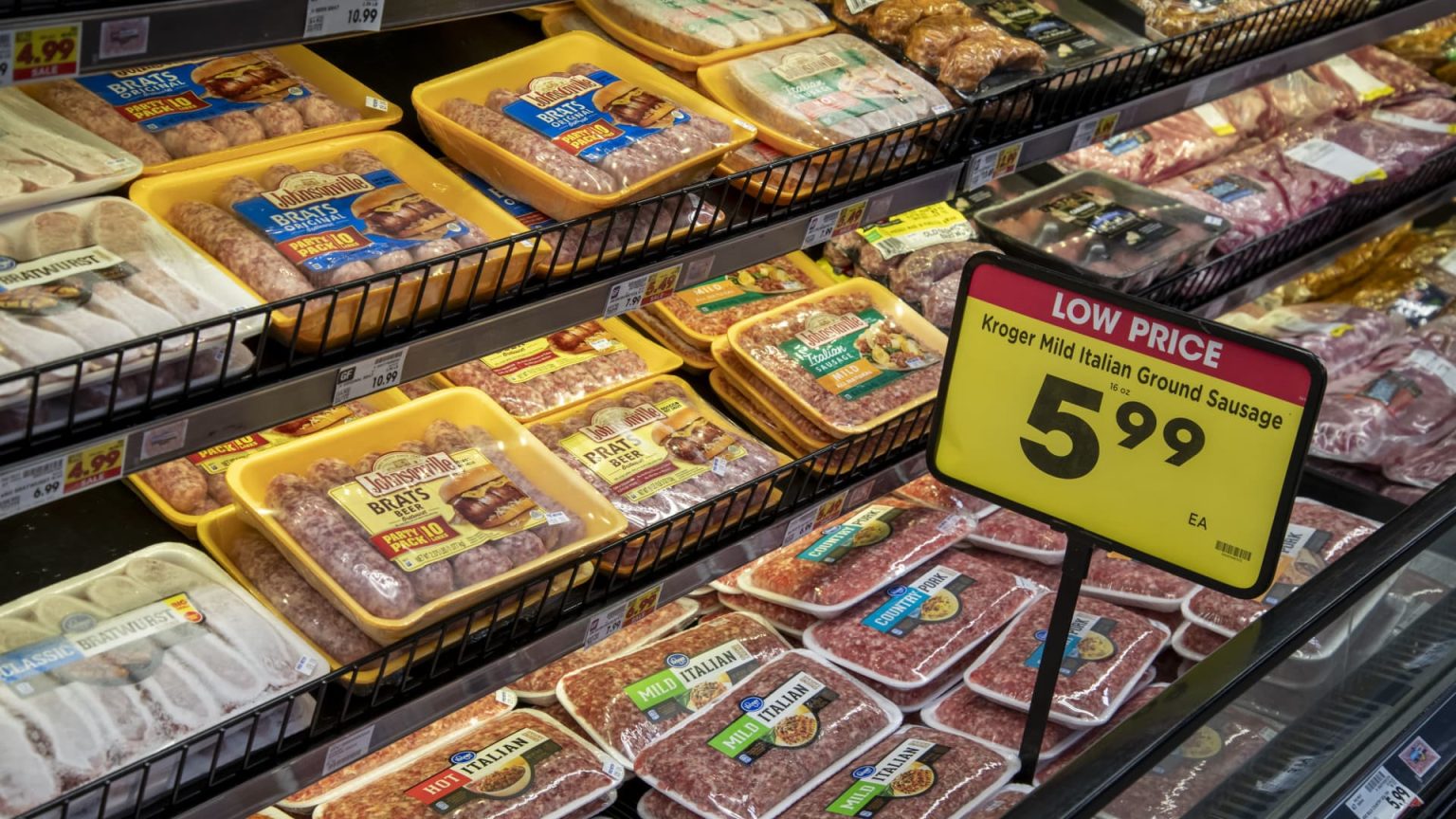The latest data from the Dallas Federal Reserve’s Texas Manufacturing Outlook Survey shows a modest growth in the dinner sausage category, indicating a trend of consumers tightening their belts in the face of high prices. This increase in demand for sausage reflects shoppers opting for cheaper products and reducing their overall spending as inflation erodes their purchasing power. Sausage is seen as a good protein substitute for higher-priced options, allowing consumers to stretch their food budgets during tough economic times. The rise in sausage sales underscores the ongoing concern over escalating grocery prices, with many Americans feeling dissatisfied with the current state of the economy.
The shift towards sausages as a more affordable protein option is part of two key themes in today’s post-pandemic economy. Corporate executives, particularly those leading major restaurant chains, have warned of a slowdown in consumer spending, especially among lower-income individuals who are struggling to make their money go further. This consumer behavior, known as “trading down,” involves choosing lower-cost meat options like sausage over more expensive choices such as steak or chicken. This trend reflects a broader pattern of cost-conscious shopping among consumers as they navigate economic challenges.
The concerns raised by food manufacturers in the Dallas Fed’s survey further highlight the economic difficulties facing various sectors. One respondent noted that the agriculture industry as a whole was facing challenges, including adverse weather conditions and rising costs. Another respondent bluntly stated that they were “preparing for the recession,” indicating a sense of unease among businesses about the current economic climate. These observations underscore the widespread impact of inflation and economic uncertainty on industries beyond just food manufacturing.
As consumers continue to grapple with the effects of inflation and rising prices, the demand for more affordable food options like sausage is likely to persist. The allure of stretching food budgets and finding cost-effective substitutes for pricier proteins remains strong among shoppers looking to make their dollars go further. While inflation rates may have moderated slightly, the cumulative effect of price increases over time has left many Americans feeling financially strained and dissatisfied with the state of the national economy. Finding ways to cut costs and economize on everyday expenses has become a common strategy for households navigating challenging economic conditions.
Overall, the increase in sausage demand reflects a broader trend of consumers prioritizing affordability and cost-consciousness in their purchasing decisions. This shift towards lower-cost protein options like sausage is driven by a combination of economic pressures, including inflation and rising grocery prices. As businesses in various industries brace for potential economic downturns, consumers are adapting their shopping habits and seeking out value-oriented products to make their budgets stretch further. The ongoing challenges posed by inflation and economic uncertainty continue to shape consumer behavior and drive demand for more affordable food options in today’s post-pandemic economy.


